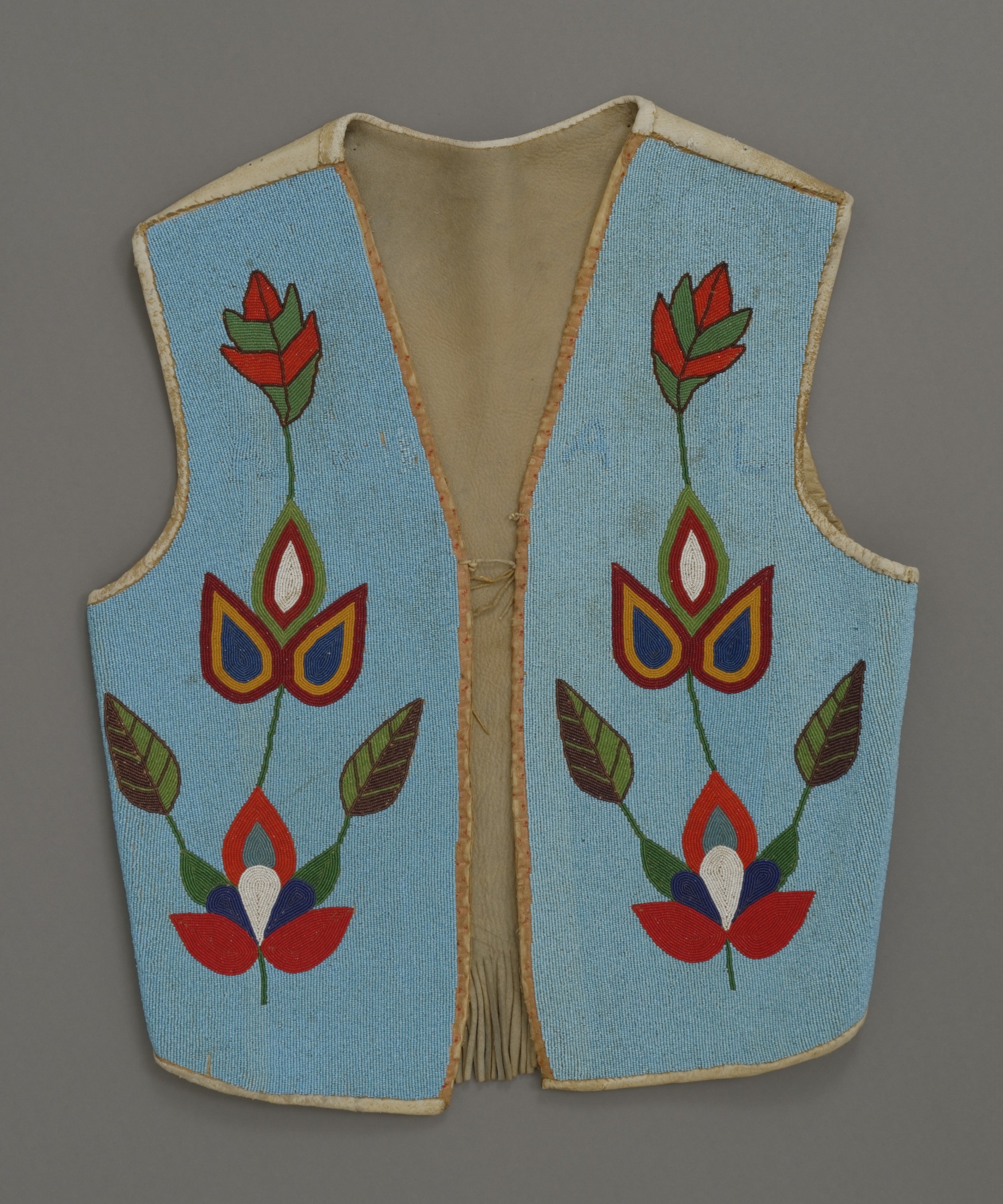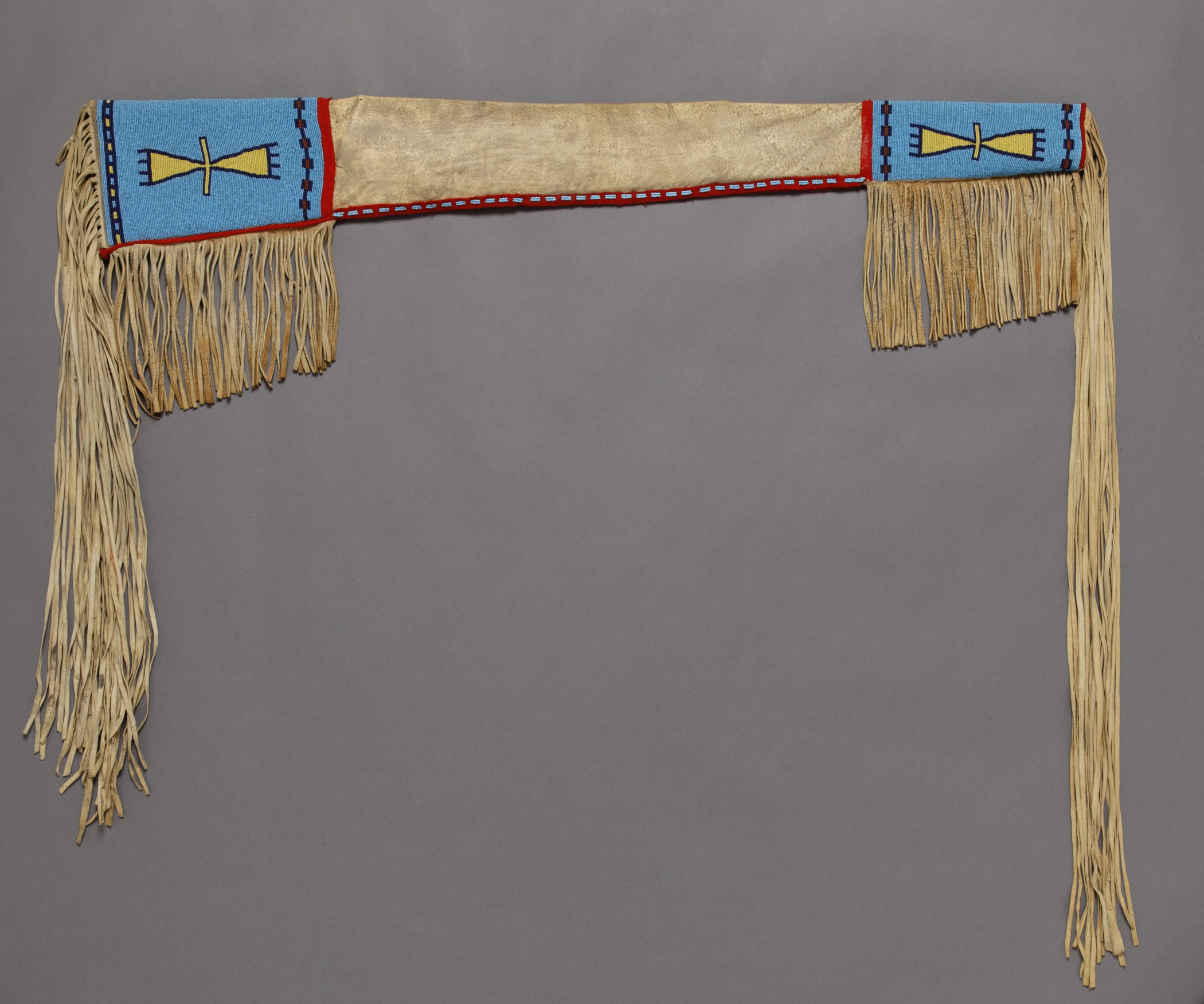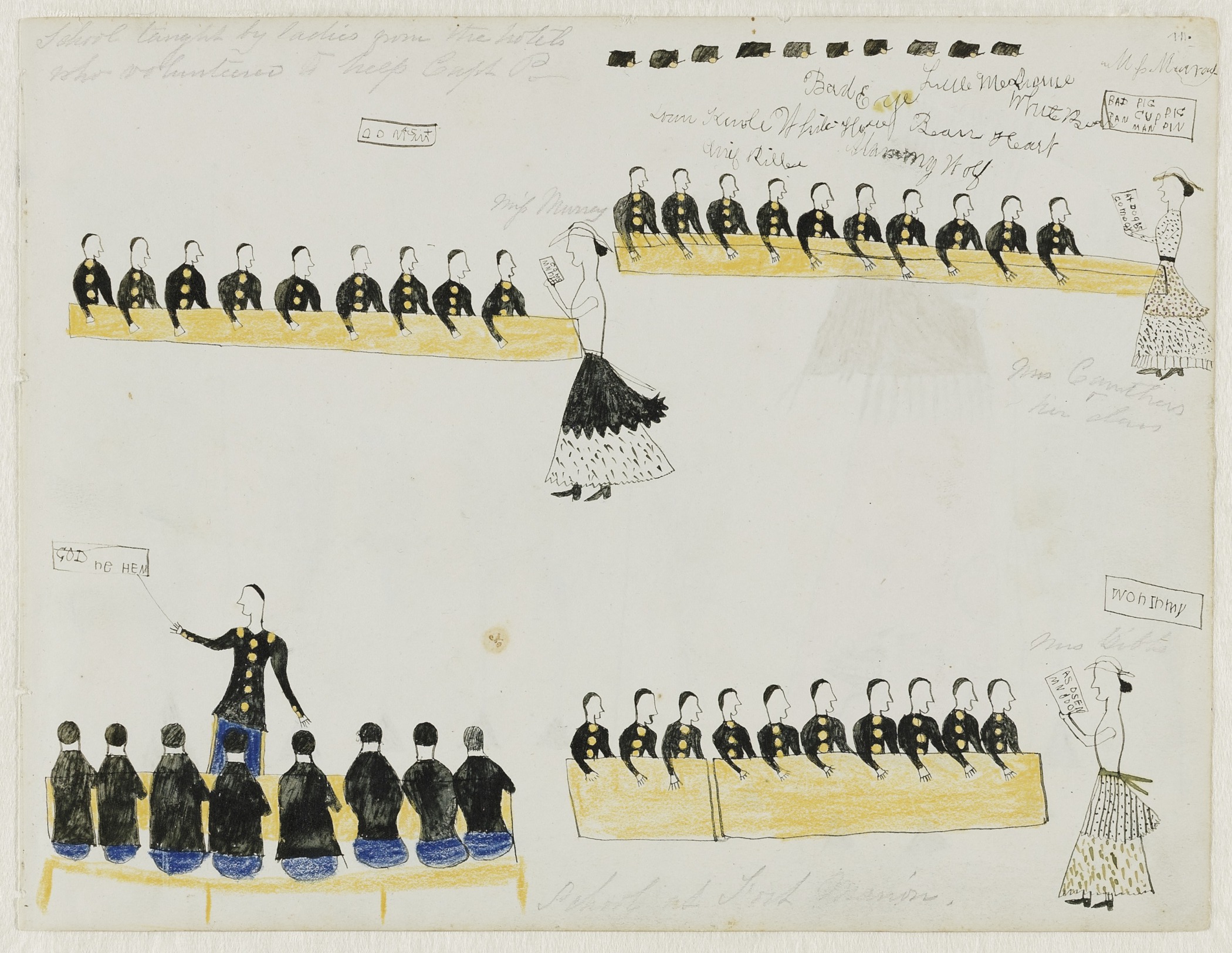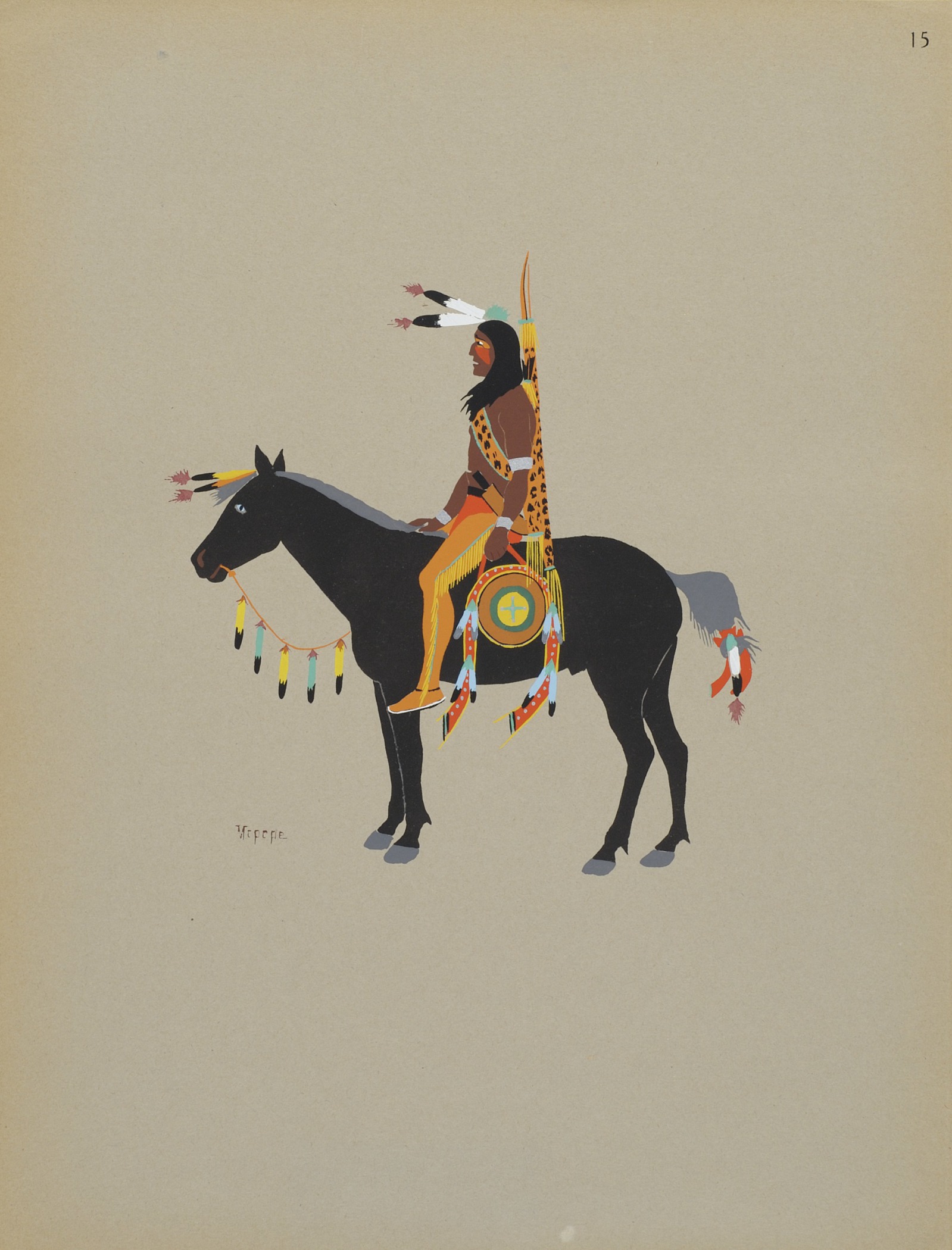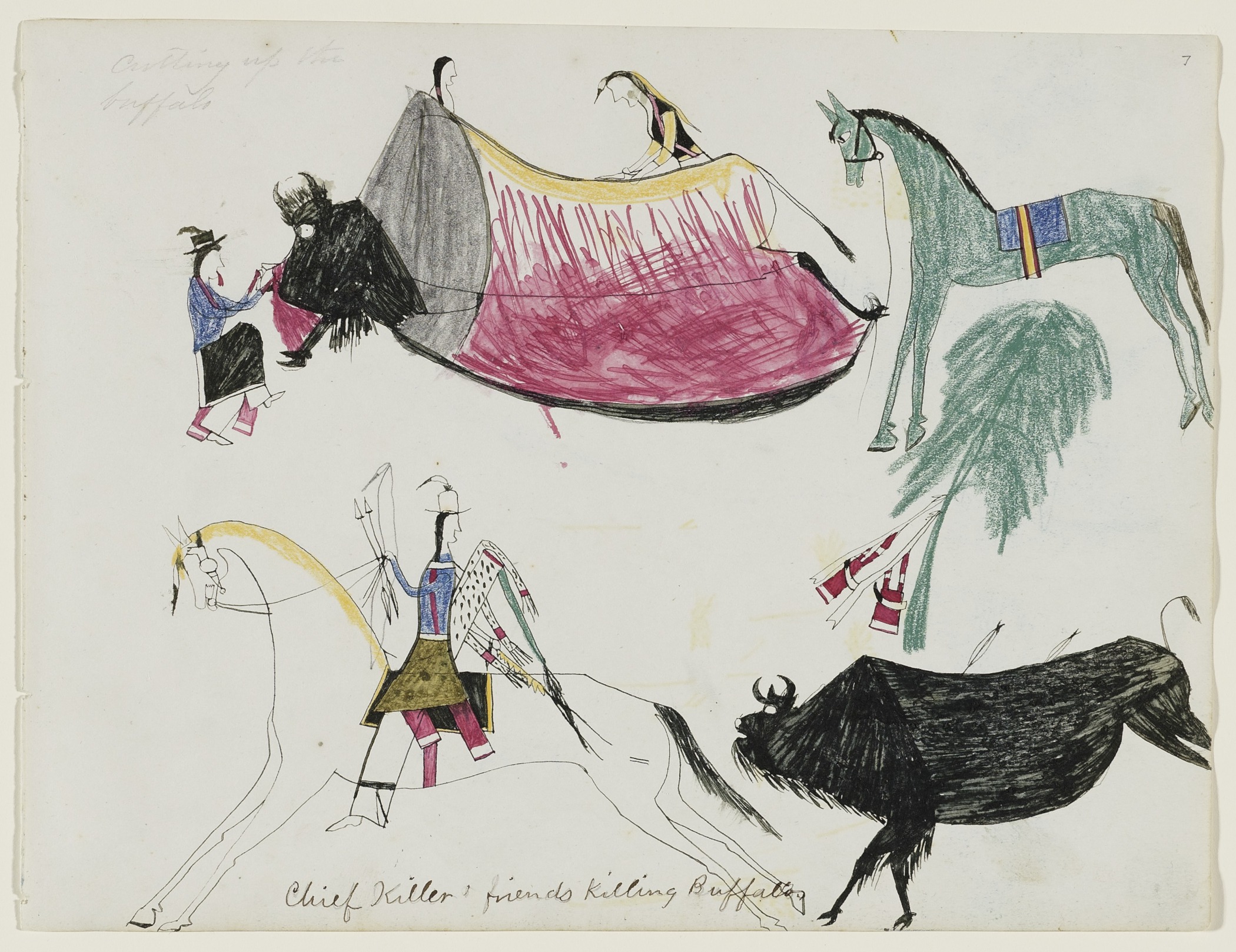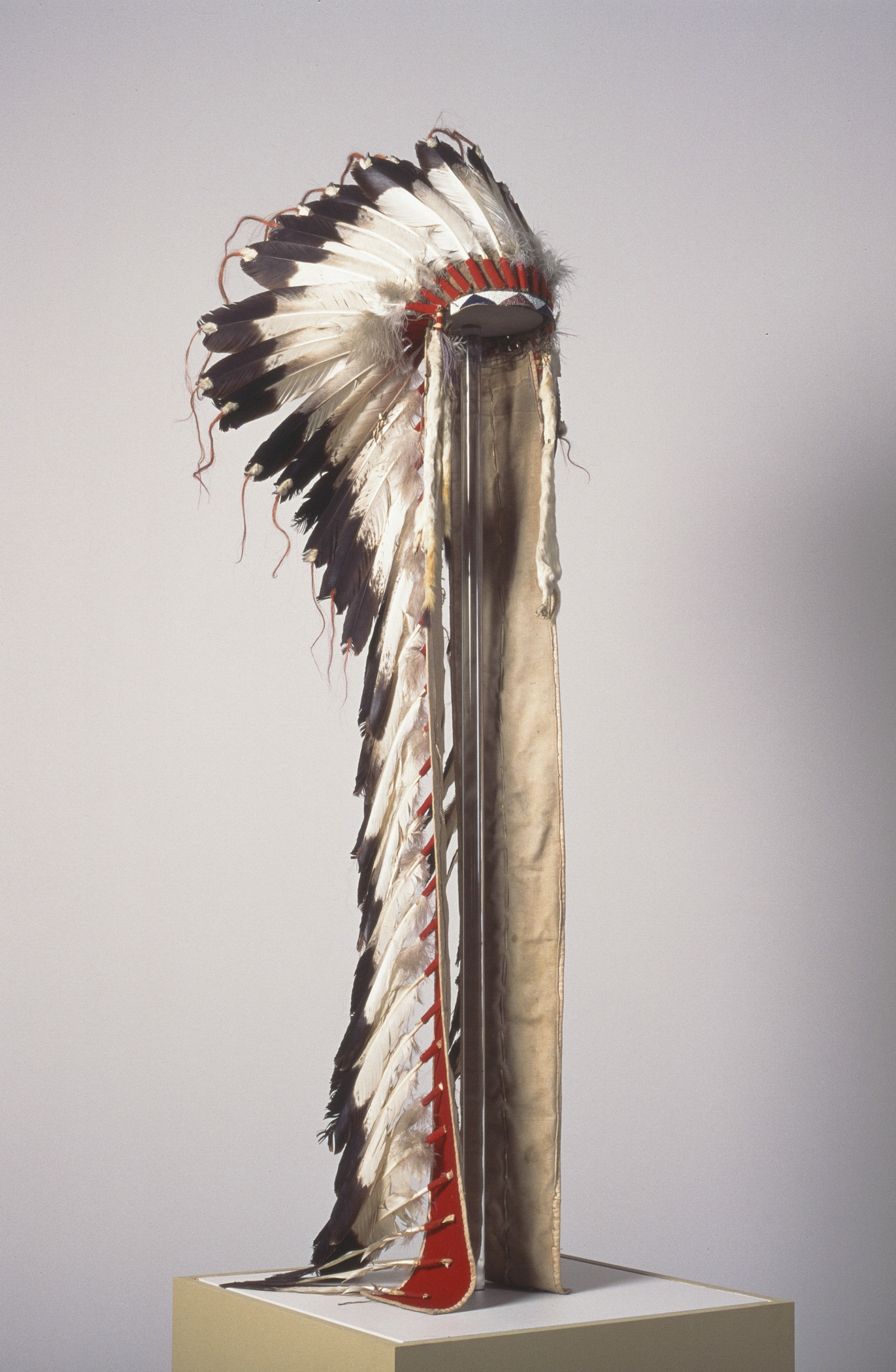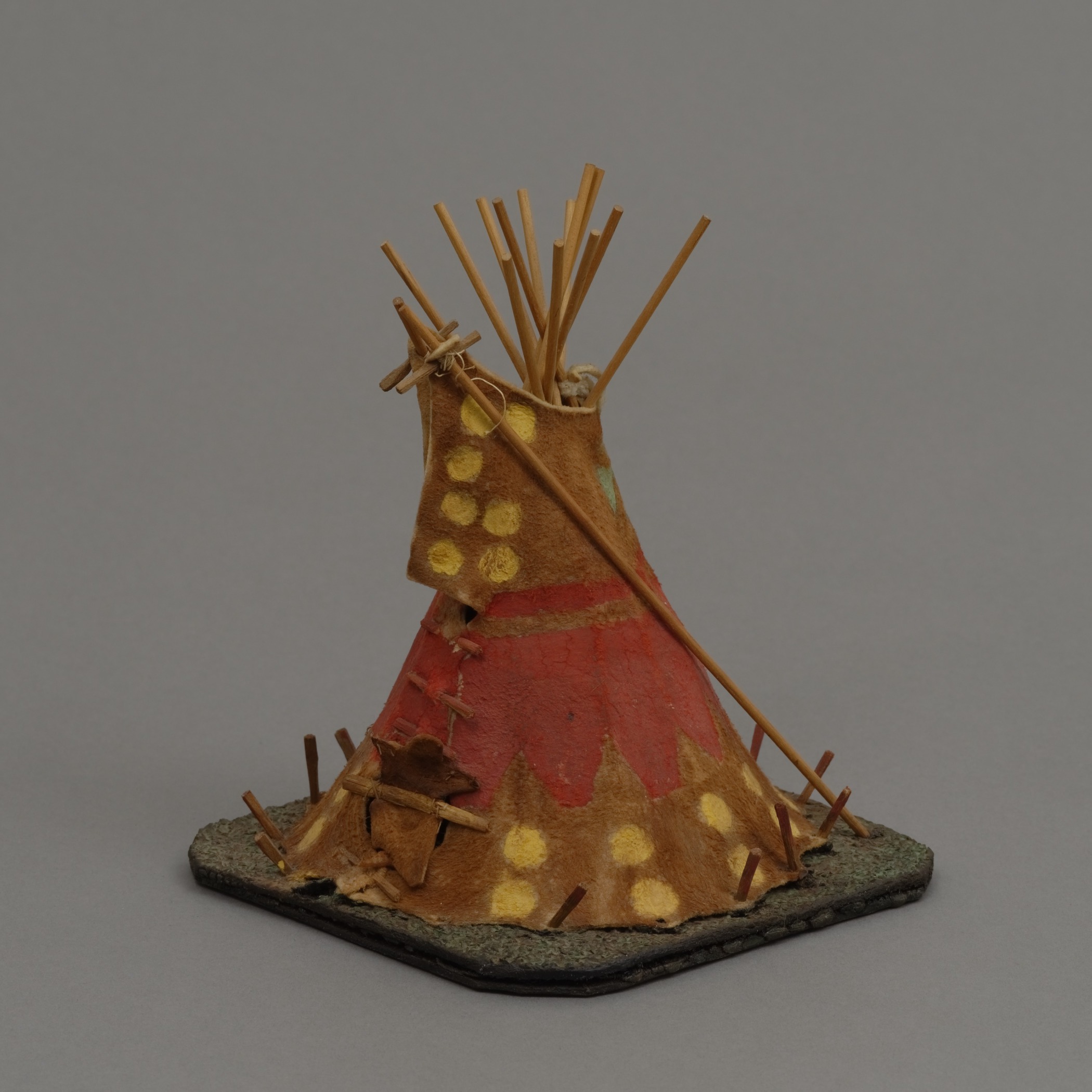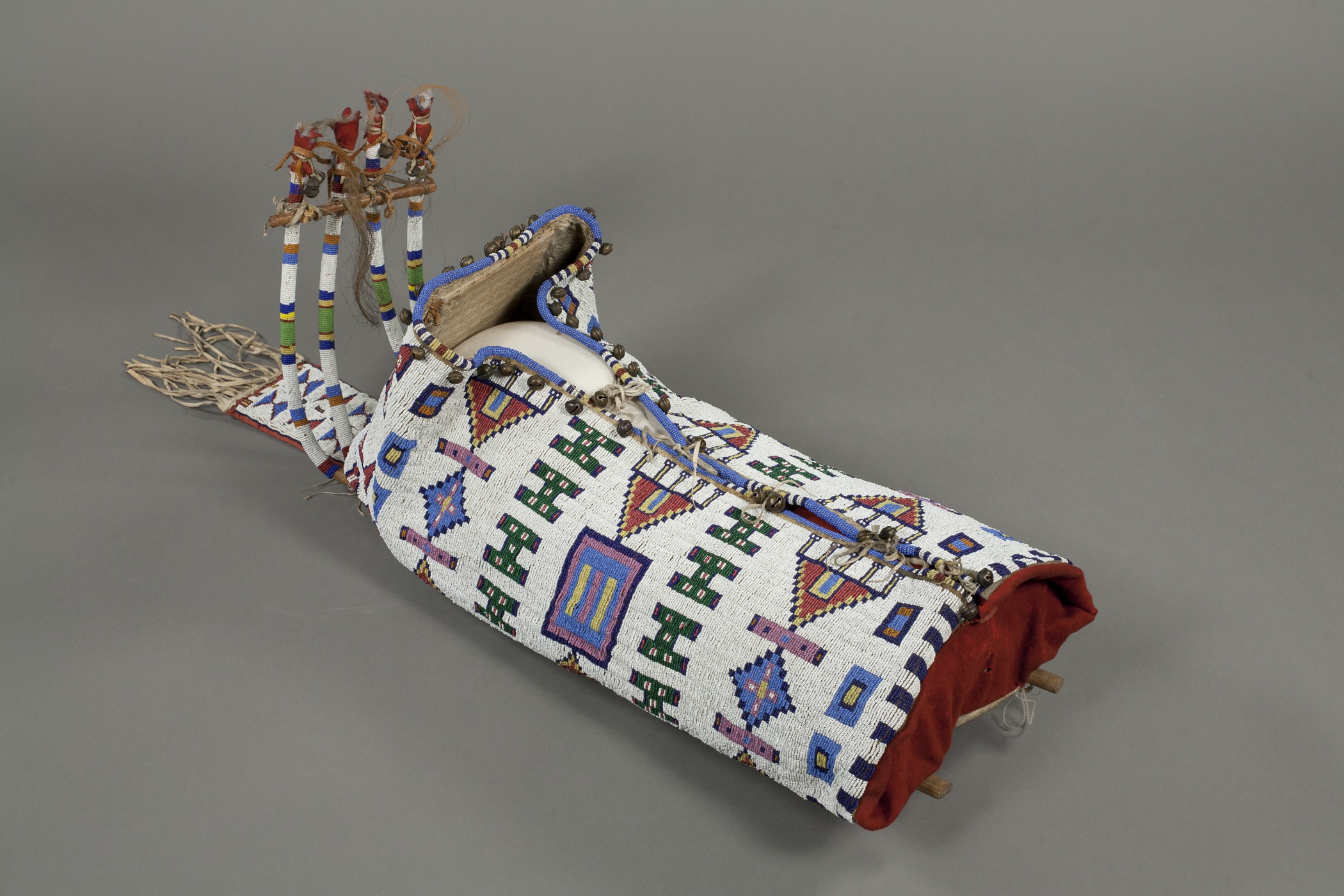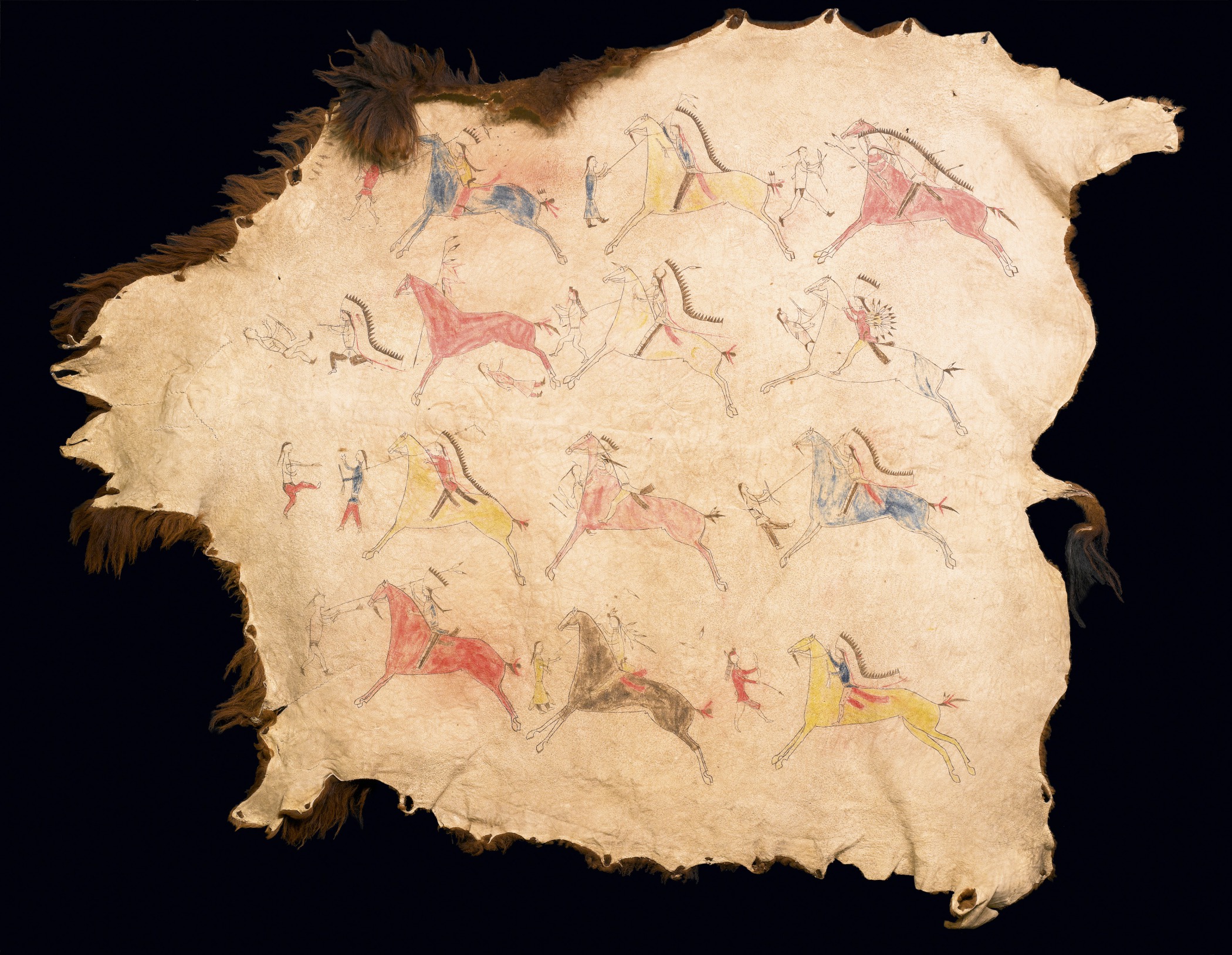Native American groups on the Plains engaged in trade long before the arrival of Europeans. Trade within the tribe involved gift giving, a means of obtaining needed items for the recipient and securing social status for the giver. Trade between Plains tribes often involved exchanging items of prestige and products from hunting—like bison robes, dried meat, and tallow—for agricultural products, such as corn and squash. Later, Plains cultures began to trade with European Americans who increasingly encroached upon their lands and lives. Plains Indians exchanged beaver and buffalo furs for European and American items, such as glass beads, horses, guns, and metal products.
By 1840, over-hunting had eliminated beaver from large parts of the Plains, and the virtual destruction of the bison herds in the 1870s brought an end to the traditional Plains Indian trade. Restricted to reservations in both Canada and the United States, Plains people had to find new ways of engaging with the Western cash economy. Native artisans found a market among European Americans for many traditionally made items, like moccasins, cradleboards, leather items, dolls, and tools. Artists also looked to new sources of inspiration to create art forms for the market that express individuality as well as cultural identity.


